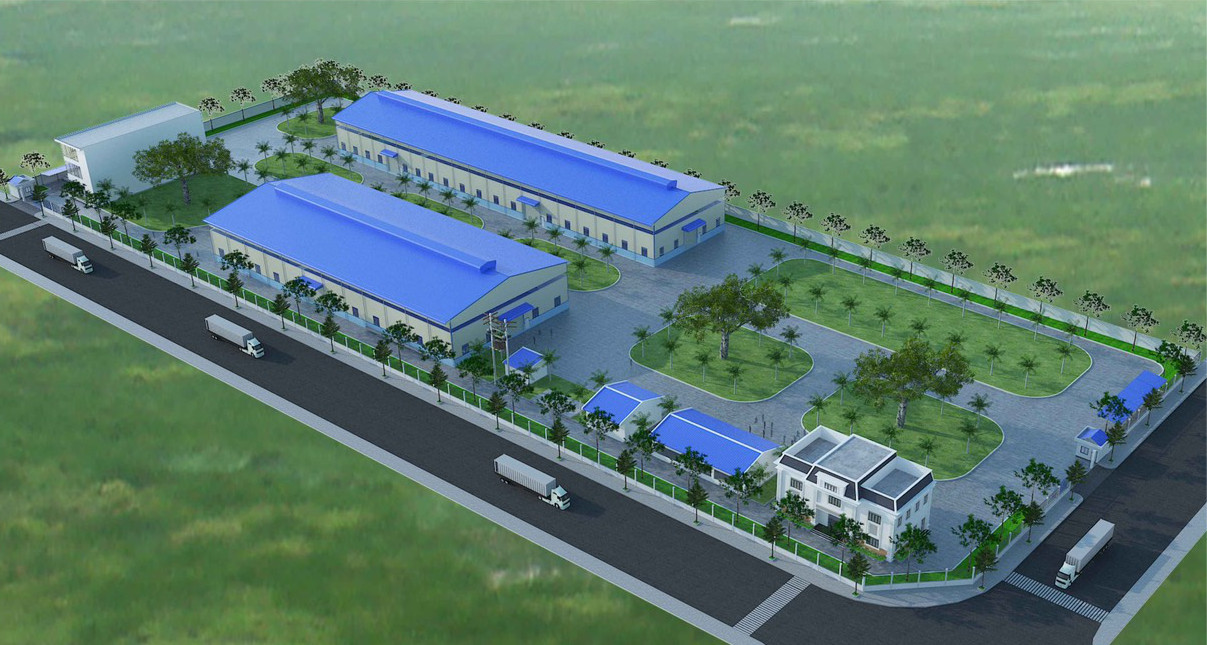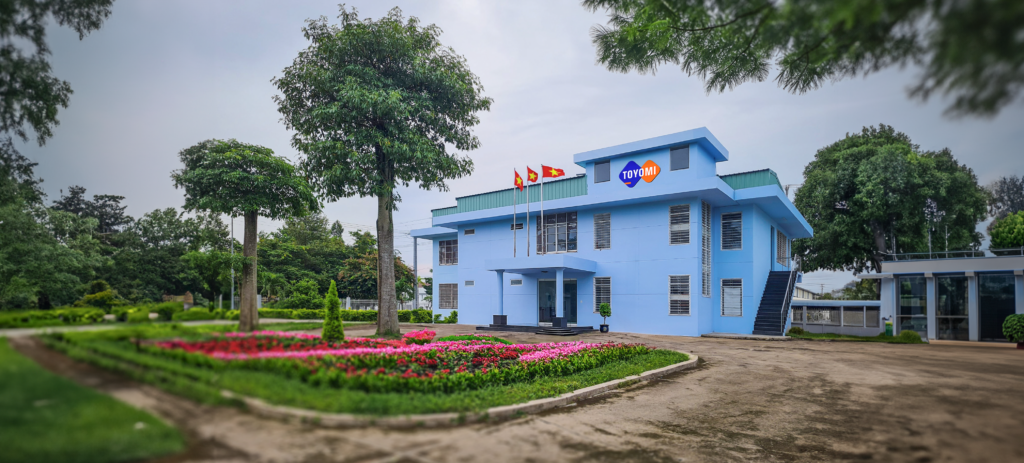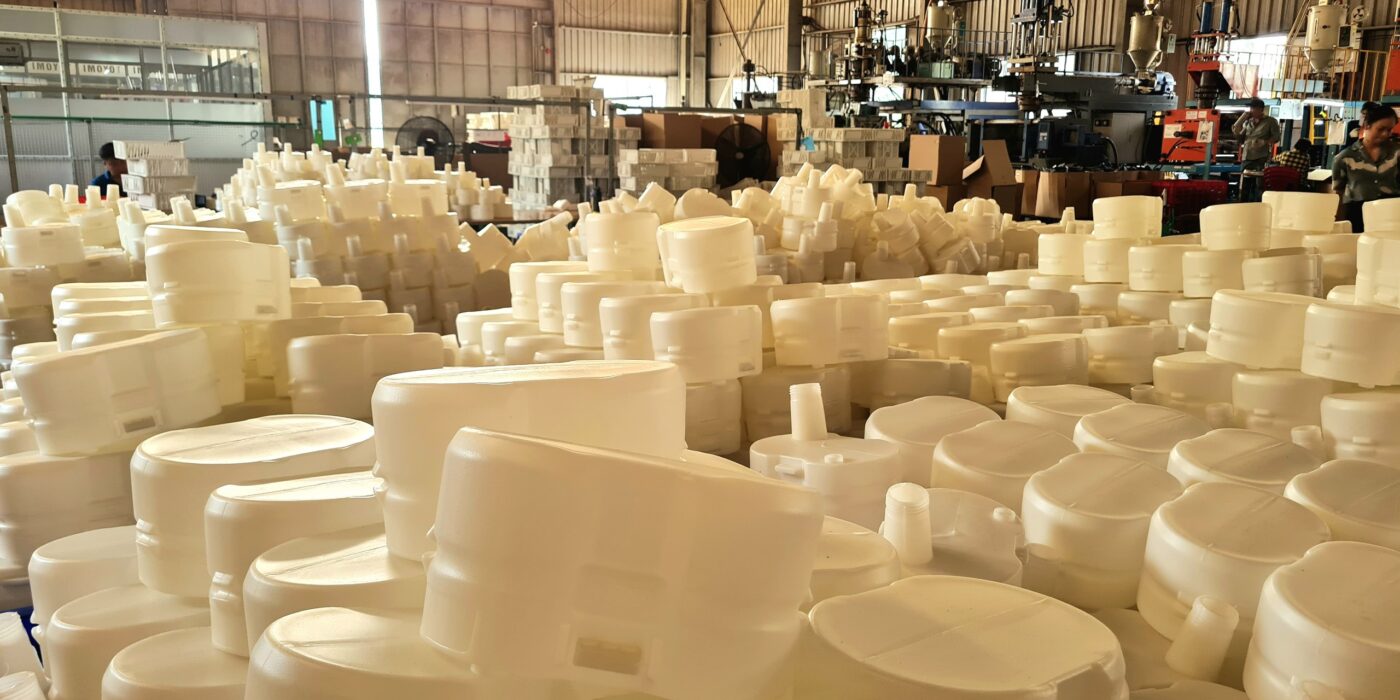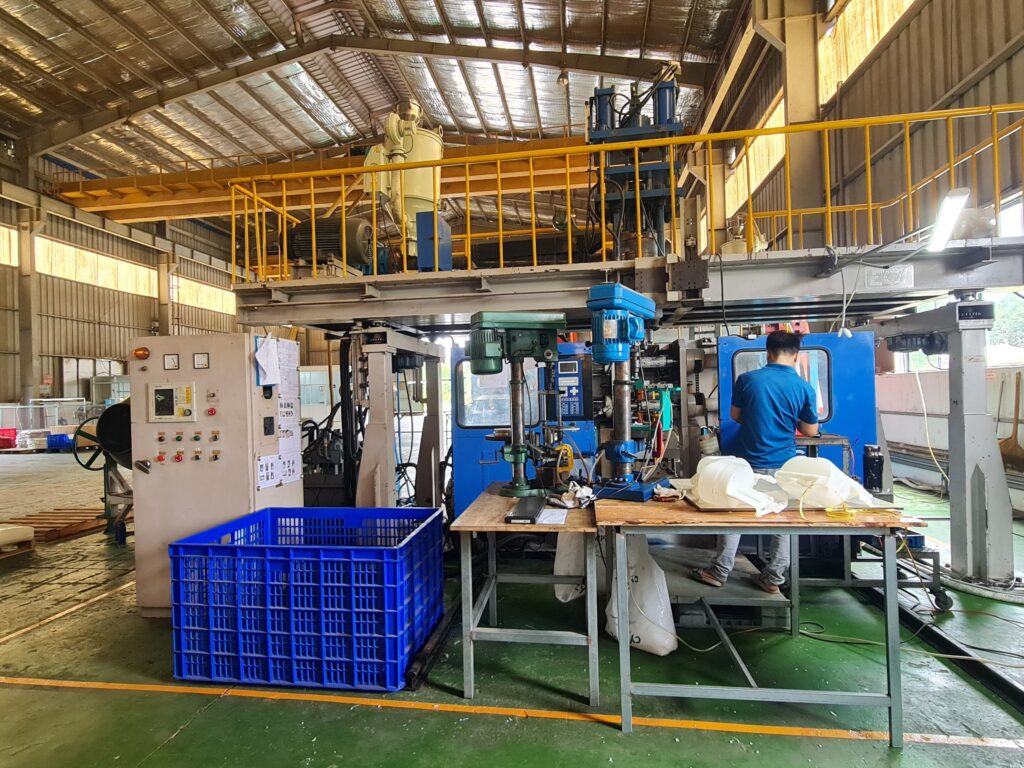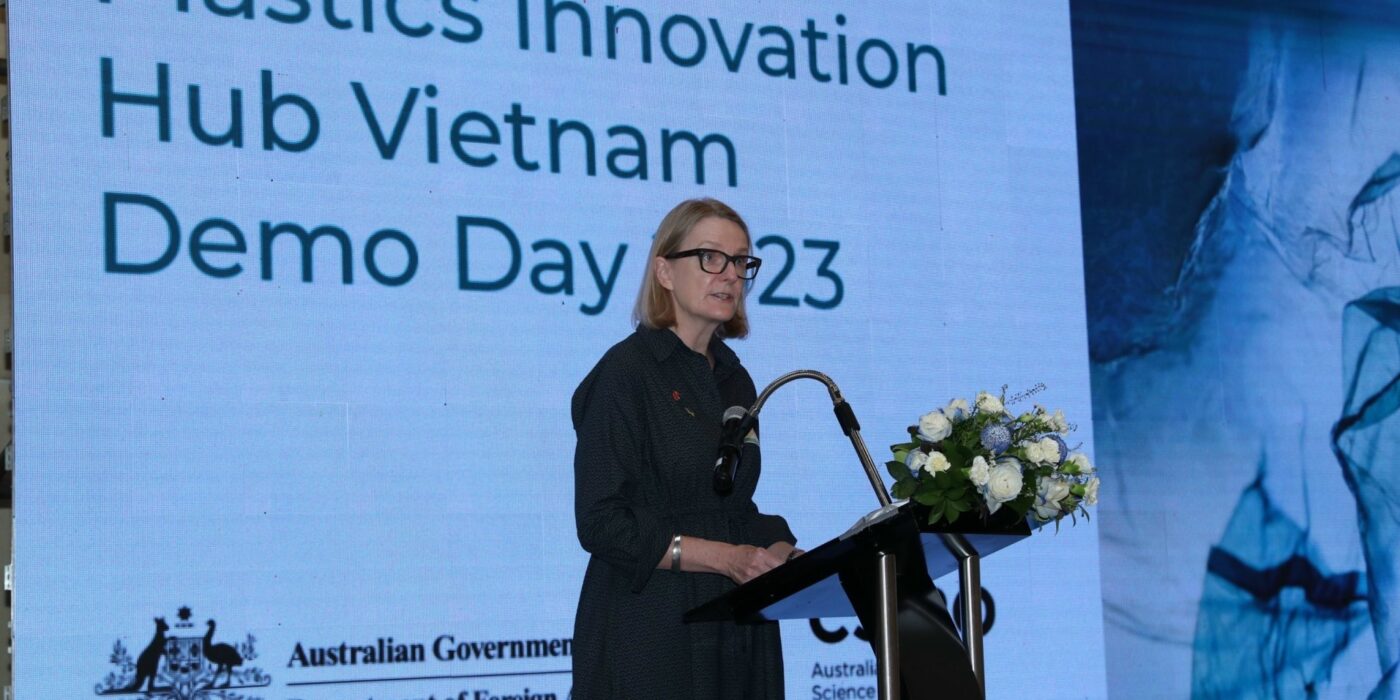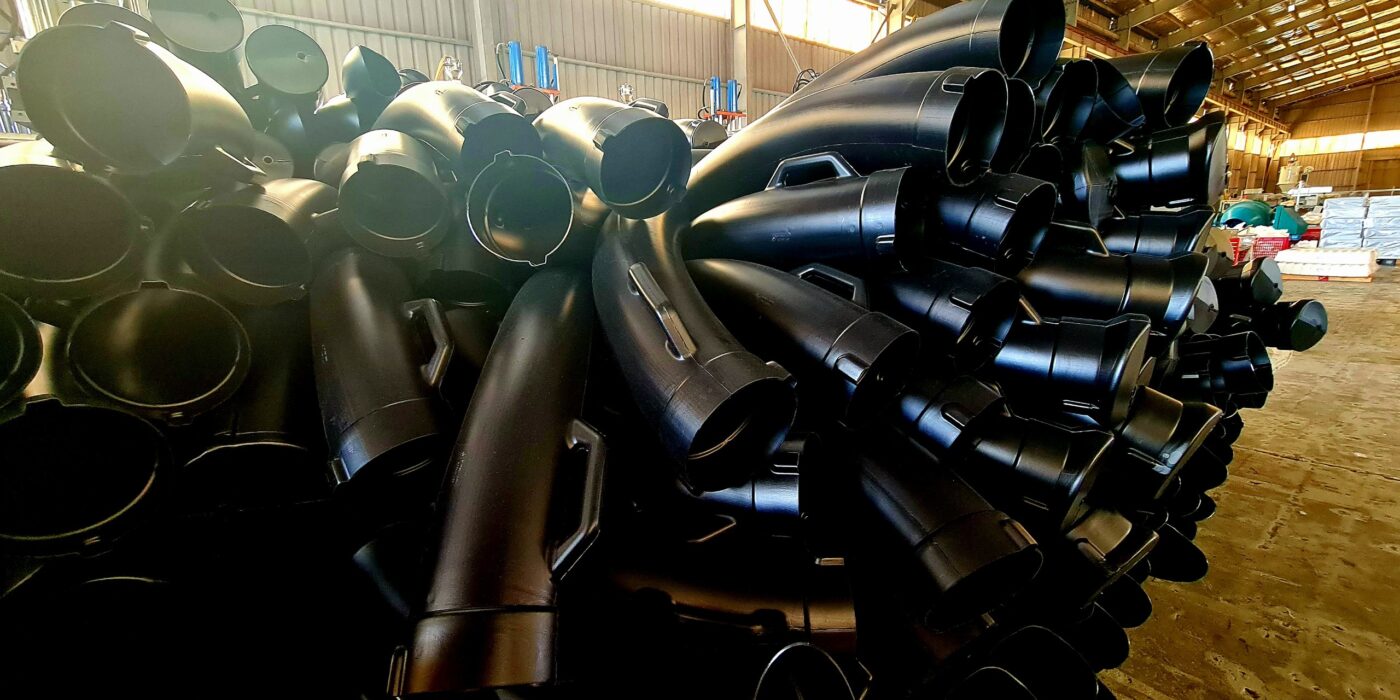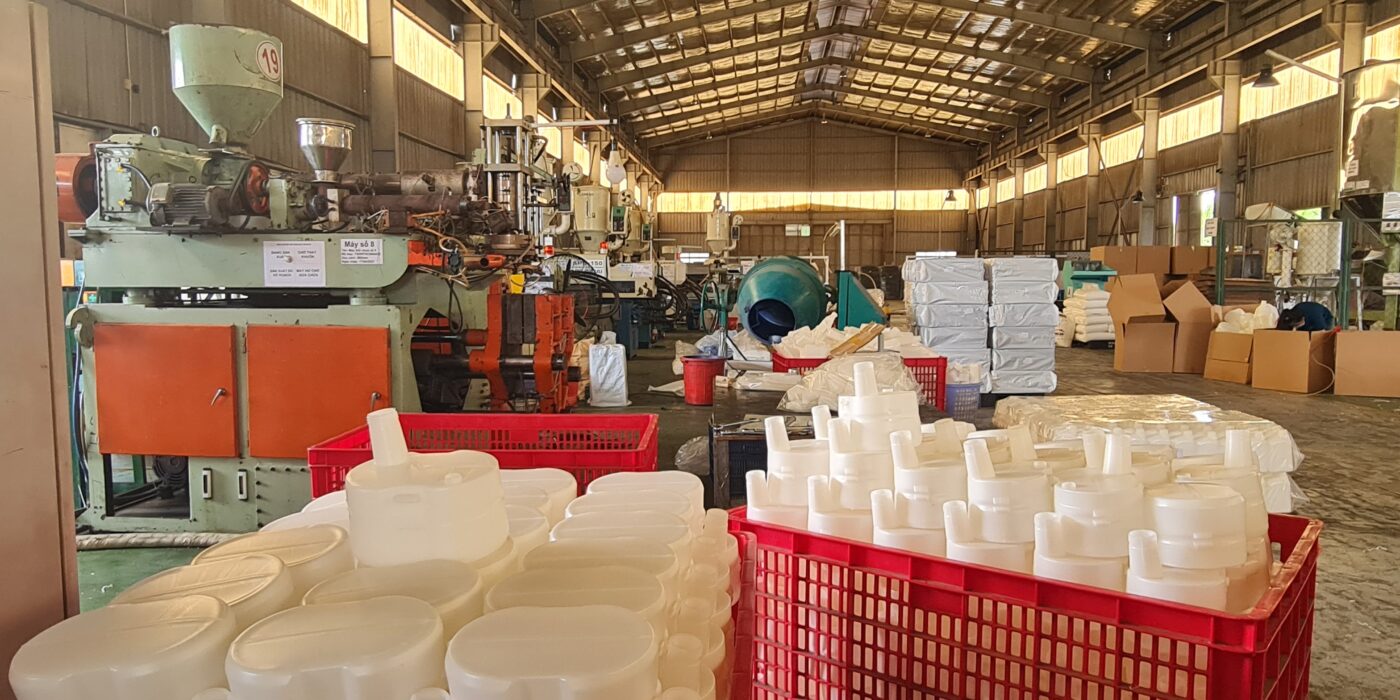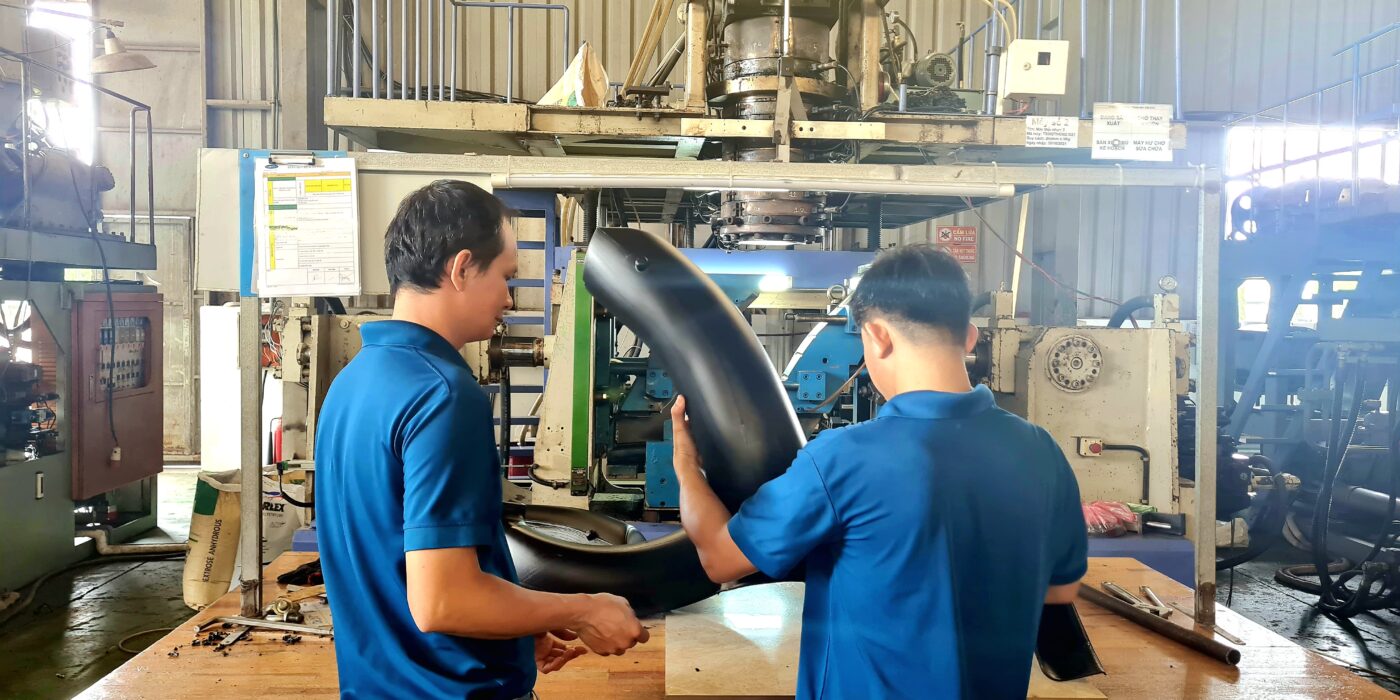The guide will cover the plastics industry in Vietnam: How to manufacture plastic goods, the plastics economy, top plastics suppliers in Vietnam, and export regulations. Plastics (aka polymers) produce consumer goods and industrial tools: Electronics, electricity, agriculture, communications, transport, and more.
Plastic is the main alternative material for wood and metal. In Vietnam, the plastics industry is one of the largest manufacturing output. We can help you manufacture consumer goods and industrial items, from phone cases to underground pipes. Contact us if you want to manufacture a plastic product in Vietnam.
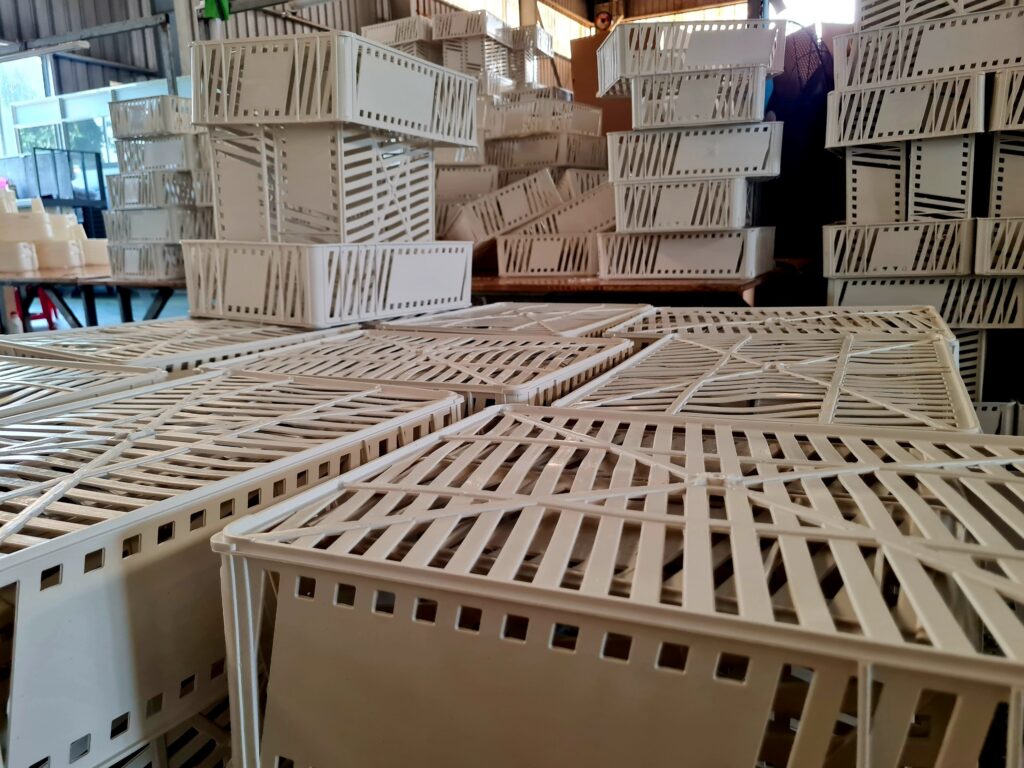
1. Popular Plastic Products Manufactured In Vietnam
-
Plastic PP sheet
-
Plastic bottles and caps
-
Plastic Foam (EVA Foam)
-
Plastic tableware and cutlery
-
Plastic bags
-
Plastic Auto parts
-
PET Resin
-
Plastic straws
-
Poly Plastic Products
-
Plastic Toys
-
Plastic Hangers
-
Injection molding plastic
-
Plastic Packaging
-
Medical Plastics
-
Plastic footwear and sandals
-
Artificial turf In Vietnam
-
Plastic Storage Units
-
Polypropylene bags
-
Plastic Food Storage
-
Plastic Safty gear
-
PVC Sponges
-
Corrugated Plastic PP sheets
-
Carpets
-
Plastic Home siding
And thousands of other products.
2. Overview Of The Plastic Market In Vietnam
2.1. Vietnam Plastics Market Statistics:
-
There are 2,000+ plastics manufacturers in Vietnam.
-
Two thousand eight hundred villages specialize in plastic and recycled handicrafts in Vietnam.
-
84% plastic is produced in Southern Vietnam – near the capital HCMC. Focus on factories in the South to manufacture plastic products.
-
14% of plastic is manufactured in Northern Vietnam. Few factories operate in the North close to the Chinese border.
-
Only 2% of plastic is manufactured in the Central Region.
2.2. Plastic Use By Industry In Vietnam:
-
37% of plastic is used in the construction industry (sheets, drainage pipes, etc.). Most plastic is consumed in the domestic market.
-
30% of plastic is used for technical goods such as electronics and product covers.
-
15% of plastic is used for consumer goods such as bottles and bottle caps.
-
18% of plastic is used for packaging goods such as shopping bags, cooking equipment, etc.
2.3. International Brands that source plastic products From Vietnam
-
Adidas
-
Mattel
-
Muji
-
Redwing shoes
-
QVC
-
Hot Topic
-
Ikea
-
Target
-
Wal Mart
-
Hasbro
-
Costco
-
Aldi
-
Ford
-
And many more!
Those are only examples of some of the world’s largest corporations using the plastics market in Vietnam to manufacture electronics.
3. Plastic Manufacturing In Vietnam: Plastic Growth
Vietnam exports $3.5B worth of raw plastics per year. Plastic production records the highest growth of virtually all materials in Vietnam. In the last decade, plastic grew at an average rate of 18% per year (between 2010-2020). This trend showed no signs of regression, and exports for plastic items are at an all-time high. Other industries that grow fast but trail behind plastics are telecommunications and textiles (read about Vietnam textiles).
The plastics industry’s rapid growth rate in Vietnam produced a diverse sector where we can source virtually all plastics and manufacture the exact product you need with injection molding technology – it is comparable to China in this regard. The main advantage is that plastics are only at the beginning stage in Vietnam, and the market has great potential for scaling.
The internal consumption of plastics grows at an astonishing rate. It is also possible to place your products directly on the domestic Vietnamese market, which grows exponentially. For reference, the average Vietnamese plastics consumption in 1990 was only 10 lbs. per person. In 2015, this number rose to 120 lbs. per person. This represents an increase in consumption of well over 1200% in less than two decades.
There are more than 2,000 plastic manufacturing factories in Vietnam. We’ve formed partnerships with plastics suppliers in industrial spheres and consumer goods. For example, a huge portion of the plastics market is also packaging, and we have exclusive relationships with packaging companies in Vietnam. So if you want a plastic package that stands out for your product, you can get it made in Vietnam.
3.1. Raw Plastics Are Imported In Vietnam
The demand for plastics in the Vietnamese economy is unprecedented. The domestic production capacity is 1M tons of raw plastic materials per year, while factories use over 4M tons of materials such as PP, PS, PE, and more. Vietnam has to import a lot of raw plastic materials to manufacture goods. As foreign investments keep pouring into the country, the demand for plastic keeps increasing.
This is not a problem for making your products, and we’ve noticed a huge increase in the quality of plastics that entered the market in recent years. This is because the Vietnamese government placed regulations on imported plastic materials into the country. As a result, the quality of plastic products grew exponentially since large companies like Apple entered the market and started manufacturing (Ex. AirPod wireless headphones) in Vietnam.
-
In Vietnam, the domestic plastic manufacturing industry can only supply 25-30% of the raw materials needed to manufacture consumer goods.
Vietnam is effectively a net importer of raw plastic materials. By next year we’re likely to see over 5 million tons of raw plastic materials being imported – as more corporate giants start moving their electronics manufacturing to the state. This is not a problem for manufacturing your products in Vietnam. Vietnam signed multiple trade agreements that make the importation of raw plastics a breeze – and your suppliers do this for you.
The price average for plastic has steadily increased over the last couple of years. On average, we notice an increase of 10% per year in the price of raw plastic materials such as PP and PE (most commonly used in factories).
3.2. Plastic Manufacturing In Vietnam: Handcraft Villages
Vietnam has a strong culture of plastic product development. The industry is shifting from the production of raw plastic materials to the production of plastic consumer goods. This is ideal for Western importers who want to source custom-made plastic products. Craft villages use new and recycled plastic to manufacture products, and virtually every product under the sun can be manufactured in these villages.
The culture dates back hundreds of years ago, and over 2,800 craft villages in Vietnam can make handicrafts from plastic. The villages make a living by producing plastic items instead of growing crops. These items are for tourists and exports (we can place a custom order).
Combining plastic handcrafts with other materials such as wood and metal is possible. Vietnamese villages are smart about their material selection and can manufacture using recycled plastic. As a result, it’s not uncommon to find villages with marketplaces selling plastic processed in plastic pellets.
3.3. Plastic Manufacturing In Vietnam // The Best Suppliers & Factories
The Vietnam plastic industry encompasses all products manufactured using plastic. This includes everything from phones, tablets, laptops, and computers to pipes, solar wires, protective cases, and more. The plastic industry is integral to the economy, and Vietnam exports plastic products worldwide. In addition, international giants are moving to Vietnam to manufacture plastic products as the economy has evolved from textiles to more complex products.
-
Companies like SHAPR manufacture 4K plastic TVs, and Apple manufactures AirPods (also made from plastic) directly in their giga-factories in Vietnam. Thousands of small suppliers can manufacture your plastic product in the country.
Plastic products made in Vietnam are exported worldwide and found in countries like the US, the UK, Germany, Japan, France, China, Russia, and others. Vietnamese plastics products have even penetrated markets like Africa, which currently has a huge demand for packaging products – all of which can be manufactured in Vietnam.
The plastic industry in Vietnam is growing for two reasons: 1) The massive increase in domestic plastic-product consumption (over 1000%+ growth in recent decades) and 2) The influx of foreign investments. Western enterprises have opened thousands of new factories that specialize in developing plastics products (scroll down for suppliers). These factories can manufacture simple and complex plastic products according to your needs.
Vietnam has the advantage of easy product placement in Western markets because “Made In Vietnam” products are not subject to anti-dumping taxes like Chinese products. This is because Western companies and entrepreneurs commission most plastics exports in Vietnam. If you want to avoid unnecessary duties and have an easy time importing your product back home, stick to Vietnam.
4. Regulations/Future Of Plastic In Vietnam
There is little regulation regarding plastics manufacturing in Vietnam, and the quality of the raw materials is expected to increase as multinationals set bases in the country. Future predictions are that nearly 90% of raw plastic materials will be imported as demand grows (currently 70-80%). The prices of plastics in Vietnam are relatively low and determined by the fluctuations in oil and currency changes.
We don’t expect prices to surge drastically soon, specifically not over the next 5-10 years. So if you want to get into the electronics/plastics manufacturing industry in Vietnam, now is the best time to get involved. Raw materials are easy to import, and your supplier will import the materials for you. They make it easy to manufacture the products you need using 3D molding, and the country has developed shipping supply chains to ship the product to any point in the world in as little as two weeks.
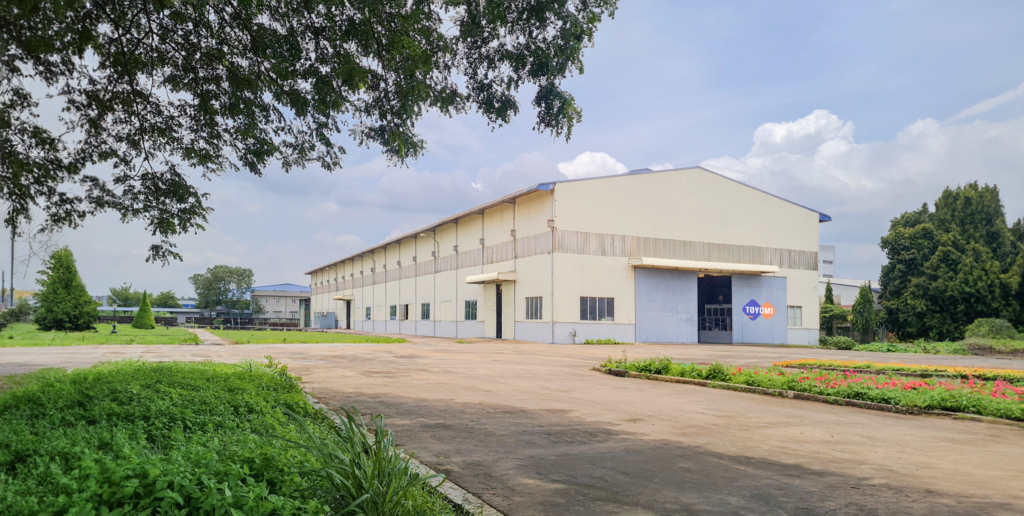
5. Injection Mold Suppliers In Vietnam // Top Suppliers List
Injection molding is a common method of manufacturing plastic products. The raw plastic materials are injected into a certain mold and hardened until they take the final shape. Injection molding is available for plastic and other materials such as metals and glass.
Injection molding technology allows you to manufacture various plastic products, including phones, toys, wires, packaging, bottle caps, automotive parts, musical instruments, furniture, mechanical parts, and more. Virtually all plastic products can be manufactured by injection molding.
6. Who Should Use Injection Molding?
Injection molding is the optimal method for people manufacturing custom products in Vietnam. Do you have an original idea that you want to manufacture? The companies below can develop a custom mold based on your designs or help you design a 3D model for the mold.
The mold will then be mass-produced to help you manufacture thousands of products. This method is used by giants such as Apple to manufacture its wireless headphones in Vietnam. We can help you find the right injection molding partner in Vietnam. (cont)

